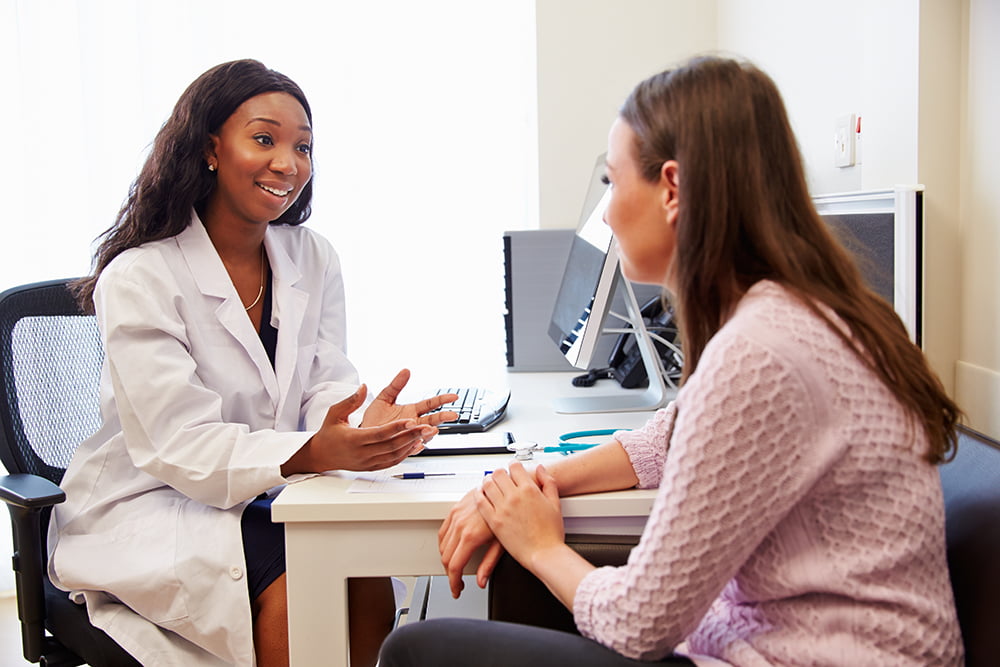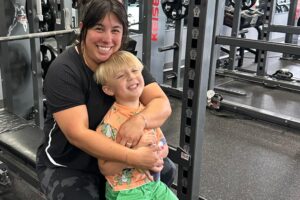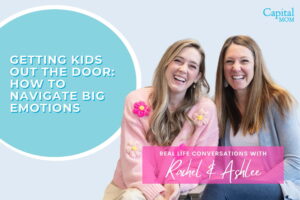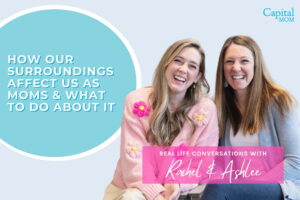Imagine being a senior in high school excited for your senior prom then hearing the words, “You might not be able to have kids.” That was me. Obviously, as an 18-year-old I wasn’t thinking about my future children right then but as previously mentioned, when asked what I wanted to be when I grew up, all I wanted to do was be a mom. So here I was in high school and hit with the thought that my dream may never come true.
Getting Diagnosed
Throughout my senior year, I would have this sporadic pain in my stomach. It was so debilitating I had to stay home from school. It would come and go, and I didn’t think it wasn’t associated with my cycle. I saw multiple doctors, but no one could diagnose my pain. Luckily, my mom believed me and fought for her child. We eventually saw a gynecologist in hopes she could figure it out. After several tests with no results, the gynecologist didn’t think the pain had anything to do with my ovaries or lady parts and the ultrasound didn’t show anything. I was sent home with the response “come back next time you have this pain.” But since the pain would come and go and I had no indication of when it was coming it took several more months for anything to be diagnosed.
People say it all the time — “listen to your body.” Some people feel really in tune with their bodies, others feel like they’re completely disconnected. Sometimes the phrase feels like it’s lost its meaning altogether. Especially when doctors keep telling you nothing is wrong.
The next time I had the pain we went back to the gynecologist, still with no conclusive reason. The doctor scheduled me for a laparoscopy. Through this procedure, she eventually diagnosed me with endometriosis. My first reaction was, “I’m not crazy – there’s really something wrong here!” My next response was to learn as much as I possibly could about the disease and its treatment.
Endometriosis is a chronic and painful disease that occurs when the endometrium (tissue that originates from the lining of your uterus) starts growing outside of your uterus, where it doesn’t belong. The endometrial tissue that grows outside of your uterus is called a lesion or an implant. These lesions are fueled by a sex hormone called estrogen. When estrogen levels rise, these lesions (patches of endometrial tissue) can grow. Later in the menstrual cycle, they may break down and shed. This can cause pain throughout the month.
Through this procedure, the doctor saw that the lesions were so severe they had to open me up through a bigger incision and remove my left ovary and fallopian tube. The lesions were encapsulating both and they couldn’t be saved. Not only that, but the doctor also didn’t want the lesions to come back so they prescribed a hormone treatment that put my body into menopause for a year.
Here I was, spring semester of my senior year going through menopause. On the plus side, I wouldn’t have a period for the next year. However, with menopause came hot flashes, mood swings and other symptoms. Try explaining that to your friends. The doctors also said conceiving a child may be difficult, but we’ll have to wait and see.
After a year of menopause, I was put on birth control to regulate and somewhat control my periods. I didn’t have any problems. I was in college and felt like my normal self again. Fast forward several years, the good news, my periods are back to normal, and I didn’t have any problems conceiving. We are blessed with 2 beautiful children.
Managing My Endometriosis
But here I sit at the age of 35 with this sporadic, debilitating pain in my lower abdomen again. After seeing the gynecologist and doing an ultrasound, once again there was nothing suggesting why there is pain. So, the doctor gave me my options: 1) exploratory surgery 2) hysterectomy 3) deal with the pain every so often.
Right now, I am dealing with the pain. The doctors and I agreed that a hysterectomy was probably in my future but wanted to wait until I was closer to 40. So, I started to keep a pain journal. I’ve found this to be very important both in managing my own illness – I was able to see, for instance, a link between my caffeine and alcohol consumption and pain – and in helping doctors to see patterns that can guide treatment. People, doctors and friends alike also take you more seriously when you’re able to demonstrate exactly what you’re experiencing and when you felt it. I made a chart based on a 28-day cycle and kept track of things I ate or drank that might be potential triggers, when I had discomfort, and what seemed to make me feel better.
I sought out the support of other women with endometriosis. No one can really understand until they’ve been through it themselves. In the meantime, I keep looking after myself! A diagnosis of endometriosis may feel like the end of the world, especially at first, but I continue to find that it’s not!

Mallory Connelly
Babies & Toddlers
In addition to the time I devote to being a mom, I also work full-time outside the home, which means my day is hardly ever as simple as nine to five. With an all-too-established schedule, as soon as I walk through the door, my day doesn’t end, but rather just begins. It’s a balancing act, especially with two children, but being a mom is one full-time job that I never want to quit!









